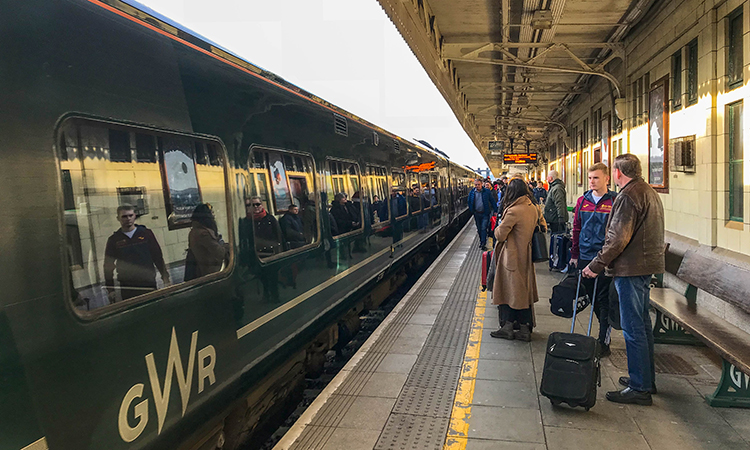Delivering better reliability with improved data analytics
Posted: 31 October 2022 | Ben Ackroyd | No comments yet
With passengers returning to UK rail, Ben Ackroyd, Chief Operating Officer at Porterbrook, explores how the increased use of data analytics will be key in delivering better reliability and will play a huge part in retaining passenger growth.


History will look back on August 2022 as a difficult time for UK railways, with several days of strike action across the network leading to severe service disruption for passengers.
However, when looking at passenger statistics on the days that were not affected by industrial action, August also brought some very positive news for the industry.
Figures released by the Department for Transport (DfT) revealed that train passenger levels reached 95 per cent of pre-pandemic levels on 10 August 2022. In fact, for seven straight days from 6 August 2022, they did not dip below 93 per cent. All of this happened against the backdrop of the strikes and many people being away on their summer holidays.


Increasing the use of analytics can lead to improving reliability for passengers.
Winning back passengers
Passengers are coming back to rail, and it is reasonable to assume that the numbers will continue to rise into the autumn. The challenge across the industry is: now that passengers are coming back, how do we get them to stick with rail travel?
The answer to that question is no surprise to anyone who has been working in the rail industry for a long time: punctuality and reliability. Repeated surveys have shown that this has, by far, the biggest impact on passenger satisfaction. For all the excellent advances we have seen in passenger experience on trains over the last decade – Wi-Fi connectivity, multiple power points, digital ticketing, to name a few – these only matter to a passenger if, first and foremost, the train runs on time.
Clearly, the more we know about what we have, the better we can manage and boost its performance.
Of course, achieving this is easier said than done. I have seen the challenge from both the operator’s side and from a central supply chain perspective as Chief Operating Officer at Porterbrook. However, we know that it can be done – we have the evidence (which I will come on to shortly) – and the good news is that it is not about buying new things, but rather about developing a better understanding of what we already have.
Improving data analytics
Improving and increasing the use of data analytics on the railway can be the most efficient and effective way of delivering better reliability, both now and in the future.
In 2021, Porterbrook teamed up with Wabtec, who support us on a wide variety of projects to maintain and upgrade our assets, and remanufacture powertrain products, to carry out a pilot of the Data into Action Reliability Taskforce (DART). The pilot, delivered by a team of over 120 people, sought to target a sustained reduction of engine delay minutes across the network by carrying out proactive engine checks.
Working with operators and using data analytics, the team identified the vehicles to target for health checks and ensured that data was shared across organisations. From over 1,000 vehicle inspections, they proactively discovered close to 500 faults that had the potential to result in delays or cancellations on the network.
The case for embracing data analytics is a strong one, and a cross‑industry approach would certainly lead to better and more consistent outcomes for rail passengers.
In numbers, finding those faults before they could cause a problem prevented 150 full or part train cancellations over the one-year pilot. It saved 9,480 engine delay minutes, and reduced Schedule 8 delay payments by over 70 per cent, from £1.3 million in the period before the DART pilot to £0.4 million during the pilot. Remember, the pilot was only carried out on a fraction of the UK’s rail fleet, so imagine the time and cost savings DART could deliver across the network.
Remote condition monitoring was also an important part of the pilot, demonstrating its clear value to the railway by identifying faults, trends, and degradation on some vehicles to drive targeted interventions in advance of critical failure.
Clearly, the more we know about what we have, the better we can manage and boost its performance.
The same applies to rail infrastructure. Porterbrook is currently working with Network Rail and other partners on a project to deliver automated train-borne inspections of rail infrastructure, utilising Class 153 vehicles upgraded with monitoring equipment. This enables close to real time data to be shared with relevant parties so that potential issues can be addressed before they cause a delay or cancellation.
Building on the dedicated 153 solution, Porterbrook is also supporting Network Rail’s wider infrastructure monitoring strategy, working with the support of train operators to deliver widespread, regular monitoring through the use of passenger rolling stock. This reduces the requirement for dedicated vehicles and provides remote inspection capabilities, supporting more targeted interventions and helping to reduce ‘boots on ballast’, which enhances safety.
The case for embracing data analytics is a strong one, and a cross-industry approach would certainly lead to better and more consistent outcomes for rail passengers.
I have been on the front line as an operator and experienced the demands and pressure of trying to deliver an effective service daily, and the uneven tug of war between delivering immediately while trying to prepare for the long-term.


Improved punctuality and reliability, driven by enhanced use of data, will be key to winning passengers back to rail.
Working smarter together
Improving and increasing the use of data analytics on the railway can be the most efficient and effective way of delivering better reliability, both now and in the future.
Now with my perspective at Porterbrook, as a ROSCO in a unique central position in the supply chain, the valuable role we can play for the industry in being well-placed to take that longer view is clear. Working together we can support long-term investments that deliver sustained reliability improvements for the industry and for our customers.
The successful DART pilot is this in action. The time and cost savings of better data analysis speak for themselves, and this presents the industry with the opportunity to be smarter about the way that we all do things.
The innovation into cleaner and more reliable traction systems must continue and Porterbrook is at the forefront of these efforts with our hybrid and hydrogen powered vehicles. However, enhanced data-gathering and analysis should be just as important, as well as cost-effective, (a part of the formula for a successful future for our railway), and the dependable delivery of a service that meets the needs of passengers and keeps them coming back.


Prior to joining Porterbrook as Chief Operating Officer, Ben Ackroyd previously held leadership roles at Trenitalia c2c, Northern and National Express, focusing on operations, transformation, and major projects.
Issue
Related topics
Big Data, Digitalisation, Operational Performance, Passenger Experience/Satisfaction, Rolling Stock Maintenance
Related organisations
Department for Transport (DfT), National Express, Network Rail, Northern, Porterbrook, Trenitalia c2c








